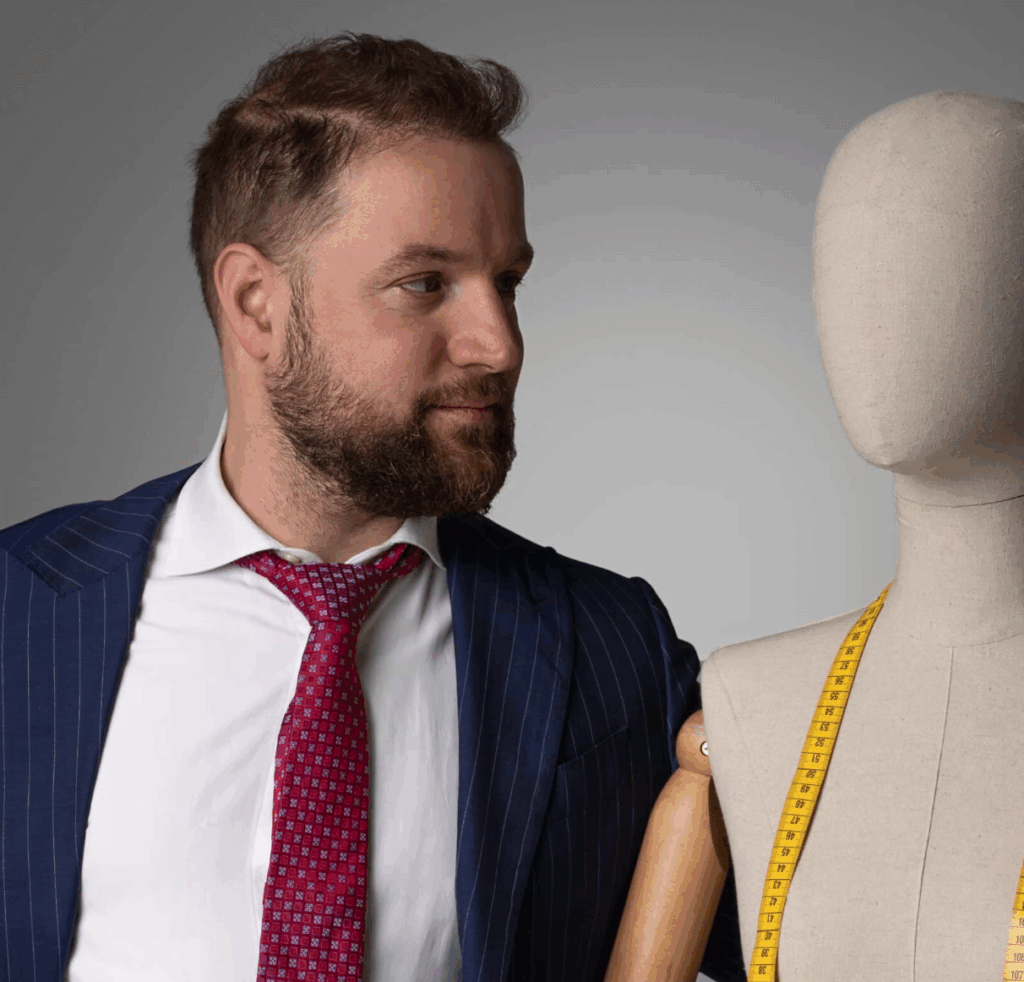Did you know that over 70 percent of luxury consumers expect brands to offer deeply personalized experiences? Understanding what truly drives high-value customers has never been more crucial for luxury marketers. When you analyze psychographics, define unique personas, and map bespoke experiences, you do more than satisfy expectations. You create memorable journeys that turn premium buyers into loyal brand advocates.
Table of Contents
- Step 1: Analyze High-Value Customer Psychographics
- Step 2: Define Luxury Brand Personas And Segments
- Step 3: Map Bespoke Customer Journeys
- Step 4: Customize Digital And Experiential Touchpoints
- Step 5: Validate Personalization With Measurable Feedback
Quick Summary
| Key Point | Explanation |
|---|---|
| 1. Understand Customer Psychographics | Delve into intrinsic motivations and beliefs driving high-net-worth consumer decisions for better targeting. |
| 2. Create Detailed Brand Personas | Develop comprehensive profiles reflecting psychological traits and emotional drivers for effective marketing. |
| 3. Map Personalized Customer Journeys | Track unique interactions and emotional triggers to enhance the luxury purchasing experience. |
| 4. Design Customized Touchpoints | Ensure digital and physical brand interactions feel exclusive and tailored to each customer. |
| 5. Validate Marketing with Feedback | Implement a framework for measuring the effectiveness of personalized strategies through diverse analytical methods. |
Step 1: Analyze high-value customer psychographics
Understanding the psychological profile of your premium brand’s most valuable customers requires a strategic approach that goes beyond traditional demographic analysis. Psychographic segmentation allows you to dive deep into the intrinsic motivations and beliefs that drive purchasing decisions among high-net-worth individuals.
To effectively analyze these psychographics, start by developing comprehensive customer personas that map out not just age and income, but the underlying psychological traits that distinguish your most valuable clients. Research from arXiv indicates that personality variables can significantly contribute to identifying unique consumer groups. This means looking beyond surface-level data and exploring elements like:
- Personal values and belief systems
- Lifestyle preferences and aspirational indicators
- Emotional drivers behind luxury purchasing decisions
- Psychological motivations for brand loyalty
One powerful method is conducting in-depth interviews and surveys with your top-tier customers to uncover nuanced insights. Pay attention to the language they use, their life goals, and the deeper emotional connections they have with luxury experiences. Understanding these psychological dimensions will help you craft marketing strategies that resonate on a profoundly personal level.

For those seeking a comprehensive understanding of consumer behavior in the luxury sector, our guide on consumer behavior analysis provides an advanced framework for segmenting and understanding high-value clients.
Step 2: Define luxury brand personas and segments
Creating precise luxury brand personas requires a nuanced understanding of the complex psychological landscape of high-end consumers. Research by Paurav Shukla reveals that luxury consumers can be categorized into four distinct groups: patricians, parvenus, poseurs, and proletarians, each representing unique purchasing motivations and behavioral patterns.
To develop these personas effectively, start by mapping out comprehensive profiles that go beyond traditional demographic information. The Luxury Mindset Segmentation Study suggests that understanding how consumers conceptualize luxury itself is crucial. Your persona development should include:
- Detailed psychological profiles
- Aspirational lifestyle indicators
- Emotional drivers behind luxury purchases
- Specific consumption patterns and brand interactions
Consider conducting qualitative research through interviews, surveys, and deep analytics to uncover the subtle nuances that distinguish each persona. Pay special attention to the language, values, and underlying motivations that drive their purchasing decisions.
For marketing professionals seeking a deeper dive into luxury market segmentation, our insights into luxury consumer behavior will provide additional strategic frameworks to refine your approach.
Step 3: Map bespoke customer journeys
Creating truly personalized luxury marketing experiences requires an intricate understanding of individual customer journeys that transcend traditional linear pathways. Research from ISCTE-IUL highlights the importance of defining unique luxury consumption segments and assessing their relationship with premium brands through detailed mapping techniques.
Academic research reveals that luxury consumers exhibit postmodern tendencies characterized by intense individualism and a focus on personal hedonistic experiences. To map these bespoke journeys effectively, you must develop a multidimensional approach that captures the nuanced touchpoints of high-end consumer interactions:
- Identify emotional triggers and aspirational moments
- Track nonlinear engagement across digital and physical platforms
- Understand individual preferences and personalization thresholds
- Create adaptive journey maps that evolve with consumer behavior
Pay close attention to the subtle psychological signals that indicate a potential customers progression through their luxury experience. Each interaction should feel intentional meticulously crafted to reflect their unique desires and lifestyle expectations.
For marketing professionals seeking advanced strategies in creating exceptional customer experiences, our guide on designing luxury brand experiences provides comprehensive insights into transforming customer journeys.
Step 4: Customize digital and experiential touchpoints
Crafting exceptional personalized experiences for luxury consumers demands a strategic approach that goes beyond traditional marketing techniques. Research from Direct EWA Publications reveals that luxury brands can amplify customer desire by leveraging exclusivity and carefully designed scarcity strategies across digital and physical interactions.
Academic research from Bhopal School of Social Sciences emphasizes that luxury brand managers must prioritize three critical elements when designing touchpoints: quality, aesthetics, and personalization. To truly customize your brand interactions, consider implementing these nuanced strategies:
- Create micro moments of exceptional personal engagement
- Design seamless omnichannel experiences that feel intuitive
- Develop technology enabled personalization tools
- Craft unique interaction protocols for different customer personas
The key is to make every digital and physical interaction feel simultaneously exclusive and intimately tailored. Your goal should be creating touchpoints that feel like they were crafted specifically for each individual customer rather than generic marketing approaches.
For marketing professionals seeking advanced techniques in designing remarkable brand experiences, our guide on experiential campaigns for luxury brands offers comprehensive strategic insights.
Step 5: Validate personalization with measurable feedback
Evaluating the effectiveness of personalized marketing strategies requires sophisticated analytical approaches that go beyond traditional metrics. Research from arXiv introduces the Semantic Brand Score indicator as an innovative method for assessing brand importance by analyzing complex text data and uncovering nuanced consumer perceptions.
Advanced data mining research demonstrates that analyzing customer buying patterns provides critical insights into the effectiveness of personalization strategies. To validate your high end marketing approach, implement a comprehensive feedback validation framework that encompasses:
- Quantitative performance metrics
- Qualitative sentiment analysis
- Longitudinal customer engagement tracking
- Personalization effectiveness scoring
Pay close attention to the subtle signals that indicate whether your personalization strategies are truly resonating with your target audience. The goal is not just measuring performance but understanding the deeper psychological engagement your marketing creates.
For marketing professionals seeking advanced techniques in measuring brand perception, our guide on understanding luxury brand experiences provides comprehensive analytical frameworks.
Elevate Your Luxury Brand with Psychology-Driven Personalization
Personalizing high-end marketing requires more than knowing your customers’ demographics. The real challenge lies in understanding the emotional drivers, psychological motivations, and unique lifestyle aspirations that shape premium purchasing behaviors. This article highlights key pain points such as identifying nuanced customer psychographics, crafting bespoke journeys, and creating exclusive digital and experiential touchpoints that truly resonate on a personal level.
At Corrado Manenti, we specialize in transforming these complex challenges into clear strategies. Through our Marketing de la mode consulting, we integrate psychology with marketing to deliver campaigns that connect deeply with your luxury audience. Our detail-oriented approach ensures every brand interaction feels exclusive and tailored to individual desires.
Ready to convert insight into impact?

Discover how our expertise in psychology-driven marketing and innovative digital strategies can help your premium brand stand out. Visit Corrado Manenti today to start your journey toward creating highly personalized luxury experiences that generate real results. For focused personal branding strategies, explore Personal Branding and see how a refined image complements your marketing efforts.
Frequently Asked Questions
How can I analyze high-value customer psychographics for my premium brand?
To analyze high-value customer psychographics, start by developing comprehensive customer personas that include emotional drivers and lifestyle preferences. Conduct in-depth interviews or surveys with your top clients to gather insights that reflect their values and motivations.
What are the key elements to define luxury brand personas effectively?
To define effective luxury brand personas, map out intricate psychological profiles, including emotional drivers and specific consumption patterns. Utilize qualitative research methods, such as interviews and surveys, to capture the distinct motivations and aspirations of different consumer groups.
How can I map bespoke customer journeys for high-end consumers?
To map bespoke customer journeys, identify emotional triggers and track engagement across various touchpoints, both digital and physical. Create adaptive journey maps that evolve based on customer behavior and preferences, ensuring each interaction aligns with their luxury expectations.
What strategies can I use to customize digital and experiential touchpoints in luxury marketing?
Focus on creating micro moments of personal engagement and designing seamless omnichannel experiences. Employ technology-enabled personalization tools to ensure that each interaction feels unique and tailored to the individual customer’s luxury preferences.
How can I validate my personalized marketing strategies effectively?
To validate your personalized marketing strategies, implement a feedback validation framework that includes both quantitative metrics and qualitative sentiment analysis. Monitor customer engagement over time and adjust strategies based on their feedback to ensure continued resonance with your target audience.
What metrics should I track to measure the effectiveness of my high-end marketing?
Track performance metrics such as customer engagement rates and personalization effectiveness scores. Regularly review this data to identify trends and make informed decisions about adjustments to your marketing approach, aiming for improvements of up to 20% in customer satisfaction.
![]()



